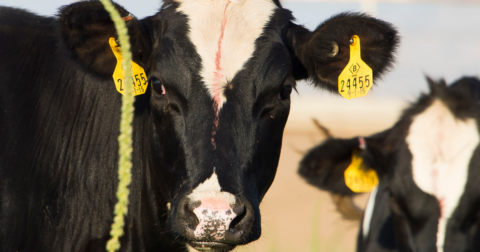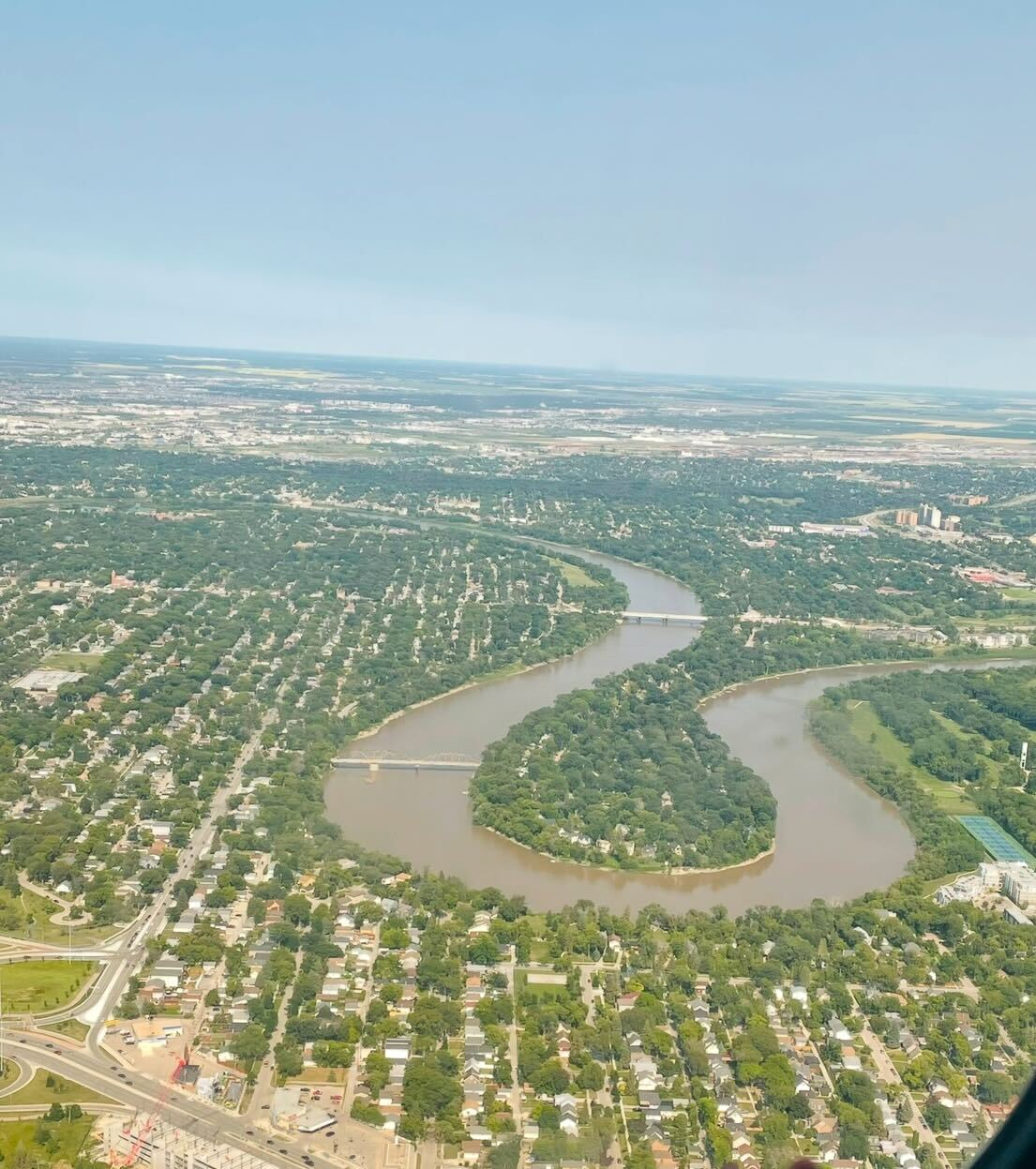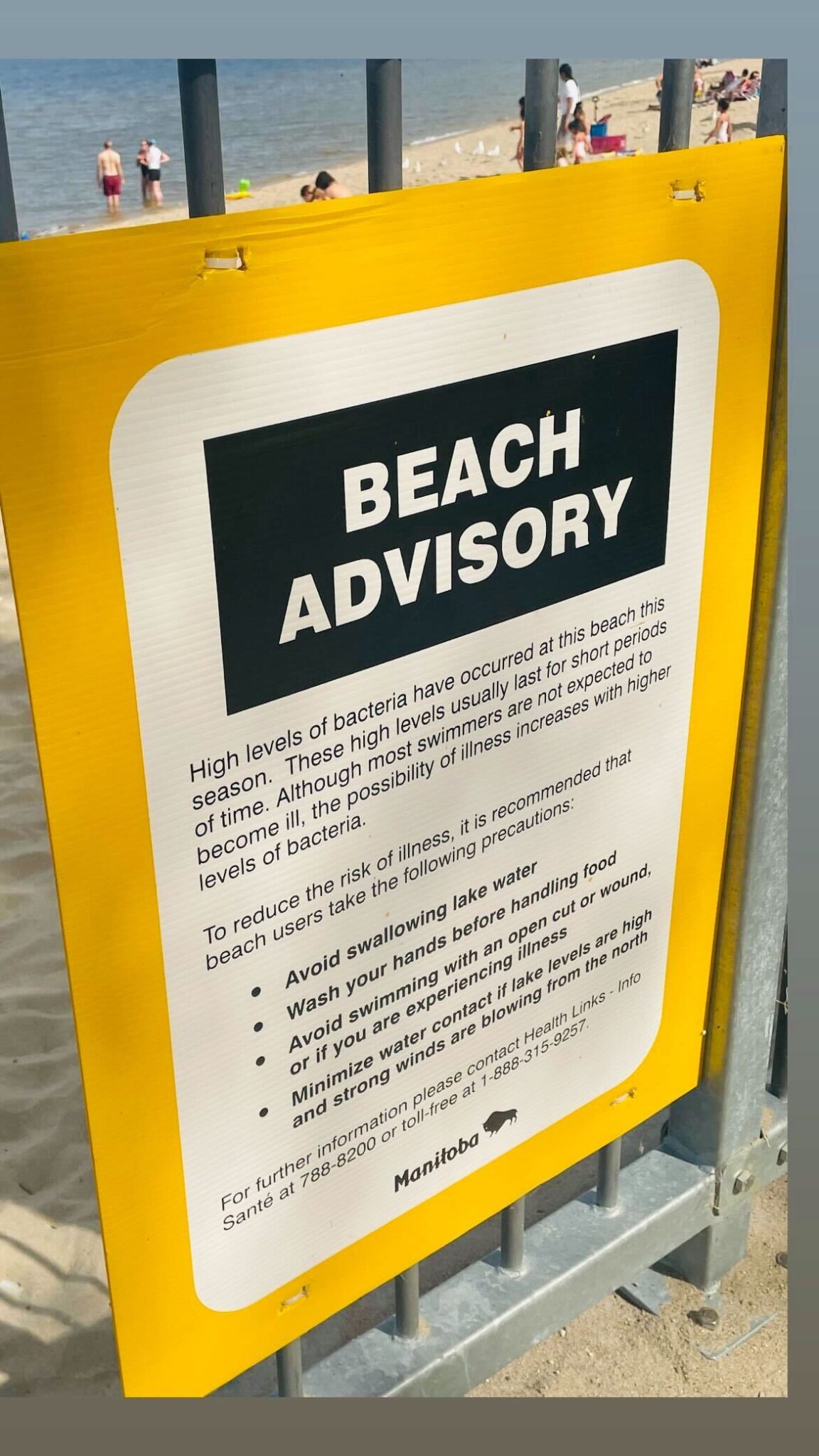Explainer
Agriculture Affects Deforestation Much More Than Most People Realize
Climate•7 min read
Feature
How activists in the U.S. and Canada are working together to oppose new factory farms.


Words by Jessica Scott-Reid
At a time when relations between Canada and the U.S. are tense, a cross-border effort is being waged against one common target: two proposed mega-dairies set to be constructed in North Dakota. At the core of the fight is clean water — a public resource that has come increasingly under threat from concentrated animal feeding operations, or CAFOs, like the proposed mega-dairies.
Those opposed to the dairies are worried about water quality in areas like Abercrombie in North Dakota, but also the major water system that flows from North Dakota into Canada, through the Red River of the North. The river empties into Lake Winnipeg — Manitoba’s largest freshwater body and the 10th largest in the world — which is already polluted by local hog farming.
Grassroots activists, legal advocates and newly formed alliances of local individuals are all working together to stop the project. “We all have an understanding that this is an issue that is not just local,” Madeline Luke with the Dakota Resource Council tells Sentient. “Pollution has no boundaries.”
Riverview Dairy LLP is a Minnesota-based company with dairy facilities across Nebraska, South Dakota, Arizona, Minnesota and New Mexico. If the company has its way, Riverview will build two additional facilities in North Dakota, one holding 12,500 cows near the town of Abercrombie, and another twice that size near Hillsboro, containing roughly 25,000 cows. That many cows can produce a little over half a million tons of manure annually, or approximately 547,500 tons by some estimates. “And they’re doing it right on the Red River.”
The Red River is a 550 miles-long waterway flowing north along the Minnesota and North Dakota border into Manitoba, and emptying into Lake Winnipeg. Advocates told Winnipeg media that the Riverview dairy project could potentially unleash an estimated 400 million liters of nitrogen and phosphorus-rich waste into the Red River each year.

Sentient asked Riverview about the concerns raised by opponents to the dairy farms about waste entering waterways. A company representative, Erica Boyum, replied, “Recent claims about our farms polluting the Red River are not accurate,” explaining that it is against federal law for agricultural waste to be discharged into waterways. “All manure from our farms will be collected and used as organic fertilizer for area croplands. This organic fertilizer will be land-applied so the nutrients are used in crop production, not lost to waterways.”
Boyum’s statement is partially correct — for most livestock operations, manure is stored until it can be applied to nearby crop farms — but not entirely. CAFOs are notorious for wreaking havoc on waterways, usually because enormous volumes of manure waste leaches and drifts into rivers and lakes, to say nothing of pollution caused by manure spills and other accidental spills. When this happens, pollutants such as nitrogen, phosphorus, E. coli and antibiotic residues enter water systems. These pollutants can cause algal blooms, dead zones (loss of essential biodiversity) and contamination of drinking water. (Riverview was asked by Sentient about drinking water contamination specifically, but the company did not directly address it in its response.)
For the already-struggling Lake Winnipeg, this could be disastrous, says Vicki Burns, a founding member of advocacy group Hog Watch Manitoba (disclosure: I co-authored an op-ed with Burns for The Winnipeg Free Press in 2024). The group has long been calling for reform of the local hog farming industry, due in part to the ecological damage it is causing the lake.
“Lake Winnipeg is now considered to be eutrophic, which means that there are too many nutrients, phosphorus and nitrogen, getting into the lake,” Burns told Sentient in an email. Adding two dairy factories along the Red River, she says, will make things worse. “The concept of that much manure being spread at once in one area is a recipe for environmental disaster.”
CAFOs also use up immense amounts of water — especially dairy operations. A lactating dairy cow drinks about 30–50 gallons of water daily, which can double when the animals are experiencing heat stress. This is in addition to the much larger volume of water used indirectly to grow feed crops and for waste cleanup. Globally, agriculture accounts for 92 percent of the global freshwater footprint, with 29 percent of the water in agriculture directly or indirectly used for animal production.
In areas like Abercrombie, which is home to about 300 people, water is provided by wells. “I live a mile away from where the proposed area is,” Abercrombie resident Dylan Johnson tells Sentient. “There’s 27 active wells within a two mile radius of the proposed dairy. We’re very concerned with our wells going dry or getting contaminated.”
It’s happened before in Arizona. In 2022, Riverview’s mega-farms there triggered a groundwater crisis after the company drilled hundreds of ultra-deep wells to pump millions of gallons, causing domestic wells to run dry, and land to sink. Local residents were forced to haul water, drill deeper wells or even abandon properties.
“They have dried people’s wells up, and they haven’t been able to drill them any deeper, so they had to just up and move,” says Johnson. “So we’re still trying to push and get more people concerned. They need to be concerned. They don’t understand how precious water is and what happens when it’s gone and if it’s contaminated.”
Sentient asked Riverview about the concerns that local wells could be contaminated or run dry, but the company did not address this question in its reply. The representative did state that “Riverview’s goal is to always be good neighbors, which includes farming in a manner that protects our shared water resources and the environment,” adding that the company’s owners and employees also “live in the communities where we farm.”
Johnson works as a contractor in Abercrombie. He’s also now an organizer with Abercrombie Citizens for Responsible Growth, a group created after representatives from Riverview visited the town last year to discuss the dairy project. Since then, Johnson has connected with other concerned groups, including Luke and the Dakota Resource Council; Burns and Hog Watch Manitoba; Animal Justice; the Manitoba Eco Network; the Coalition to Save Lake Winnipeg, and others.
The groups are now working in both Canada and the U.S. to bring awareness to all residents and areas the dairy project would impact. They have hired a lawyer and hydrologist, recently held a joint press conference along the Red River in Winnipeg, and penned a joint op-ed in The Winnipeg Free Press. “People are willing to work together,” says Luke, “and happy to work together.”
One strategy the collective is exploring is contesting Riverview’s permit for waste lagoons, which Luke says would hold around 107 million gallons of manure and other waste. “They are only clay-lined, with a seepage rate that could contaminate water in just over a year,” she explains, citing the hired hydrologist. Soil measurements show the water table lies just 8.5 to 24 feet below, “so pretty superficial,” she explains. “And with this seepage, it creates a plume that can go miles, straight into the surface water.” The group is preparing to request that regulators not permit the lagoons.
Taking this issue to the International Joint Commission is another strategy the groups are considering. The IJC is a binational organization established by the American and Canadian governments to prevent and resolve disputes over shared waters. Its two main responsibilities, according to the website, are “approving projects that affect water levels and flows across the boundary and investigating transboundary issues and recommending solutions.”
James Beddome, executive director of the Manitoba Eco Network, shared a letter the group sent to the International Red River Watershed Board, which is tasked with keeping the IJC informed on issues related to the river and its tributaries. It reads in-part that, “Opening the Red River basin in North Dakota to factory farming and liquid slurry systems of this size and nature will be the final nail in the coffin for the ecosystem health of Lake Winnipeg.” A similar letter was sent to the IJC by the Coalition to Save Lake Winnipeg.

“Lake Winnipeg is a massive watershed that’s pretty much the center of the North American continent,” says Beddome, who hopes the effort will inform regulators and government officials, so “that the projects ultimately will be stopped.”
In Abercrombie, “we’ve been pushing and pushing to get this thing stopped,” says Johnson. “The state just keeps going with their side, because they want to see these big CAFOs come into North Dakota.”